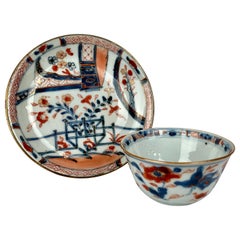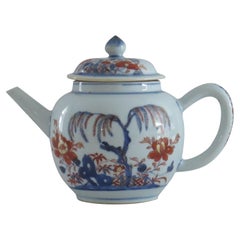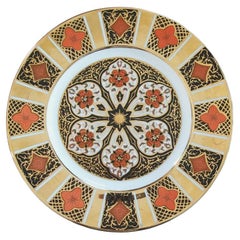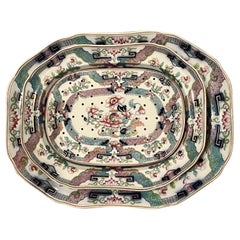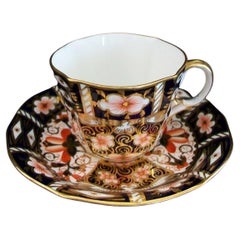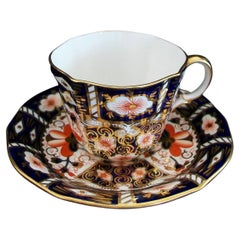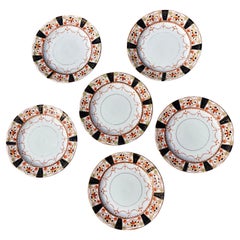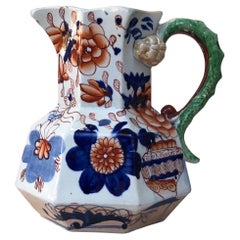Imari Pattern China
Antique 1790s Chinese Chinese Export Ceramics
Enamel
Antique Early 18th Century Chinese Chinese Export Ceramics
Porcelain
Mid-20th Century English Victorian Dinner Plates
Ceramic
Antique 1840s English Early Victorian Platters and Serveware
Gold
Early 20th Century English Victorian Tea Sets
Ceramic
Mid-20th Century English Victorian Tea Sets
Ceramic
Vintage 1920s English Art Deco Porcelain
Gold Leaf
Antique 1890s English Late Victorian Pitchers
Ceramic
Antique Mid-18th Century Chinese Qing Ceramics
Porcelain
Antique Mid-18th Century Chinese Chinese Export Ceramics
Other
Antique Early 18th Century Chinese Ceramics
Porcelain
Antique 18th Century and Earlier Chinese Dinner Plates
Antique Early 19th Century British Regency Soup Tureens
Ironstone
Antique Early 19th Century English Porcelain
Porcelain
Late 20th Century Chinese Ceramics
Bronze
Antique Early 19th Century English Georgian Ceramics
Ironstone
Antique 19th Century English Chinoiserie Dinner Plates
Ironstone, Pottery
Antique 19th Century British Chinoiserie Barware
Porcelain
Late 20th Century English Chinese Export Tableware
Mid-20th Century French Crystal Serveware
Crystal
Antique Late 19th Century Chinese Chinese Export Ceramics
Porcelain
Antique Early 18th Century Chinese Ceramics
Porcelain
Antique 18th Century Chinese Ceramics
Porcelain
Antique 18th Century and Earlier Chinese Qing Ceramics
Porcelain
Antique 16th Century Chinese Chinese Export Serving Bowls
Porcelain
Antique 1790s Chinese Chinese Export Porcelain
Enamel
Antique 1790s Chinese Chinese Export Ceramics
Enamel
Antique Late 18th Century Chinese Chinese Export Ceramics
Enamel
Antique 1720s Chinese Chinese Export Ceramics
Ceramic, Porcelain
Late 20th Century English Victorian Dinner Plates
Ceramic
Antique 18th Century and Earlier Chinese Porcelain
Gold
Antique Early 18th Century Japanese Dinner Plates
Ceramic
Late 20th Century Japanese Tableware
Mid-20th Century English Porcelain
Imari Pattern China For Sale on 1stDibs
How Much is a Imari Pattern China?
- What is Imari pattern?1 Answer1stDibs ExpertApril 5, 2022Imari is a Western term for Japanese Arita-ware porcelain. Most of these pieces began with an underglaze of blue and an overglaze which featured red and orange hues along with gold. Imari subject matter was diverse and could include people, flowers and scenery. On 1stDibs, find a variety of original artwork from top artists.
- What is an Imari pattern?2 Answers1stDibs ExpertApril 5, 2022Imari is a type of porcelain with three colors, blue, rusted red and a bright gold. The pattern is characterized by intricate floral designs. The name Imari comes from the Japanese seaport where pieces of this pattern were shipped to the West. On 1stDibs, find a collection of Imari porcelain pieces from some of the world’s top sellers.1stDibs ExpertApril 5, 2022Imari patterns are those common in Imari ware, a type of Japanese ceramic style popularly exported to Western collectors from the 17th to 19th centuries. They are typically highly decorated, often with reds, blues and other colors. Shop a collection of antique Imari ware from some of the world’s top sellers on 1stDibs.
- 1stDibs ExpertMay 30, 2024The most popular china pattern can vary over time as tableware and collecting trends change. However, some patterns seem to remain consistently popular year after year. Among them are Royal Copenhagen's Blue Fluted and Flora Danica, Royal Albert's Old Country Roses, Spode's Blue Italian and Woodland, Meissen's Ming Dragon Red, Johnson Brothers His Majesty, Lenox Holiday and Portmeirion's Botanic Garden. Find a wide range of china on 1stDibs.
- 1stDibs ExpertSeptember 23, 2024To identify your Limoges china pattern, first try snapping a photo of it up close. Then, perform a reverse image search. In some cases, you may immediately find out what your pattern is. If this approach doesn't work, examine images on trusted online resources to determine the pattern name. A certified appraiser or knowledgeable antique dealer may also be able to expedite the identification process for you. Explore a large selection of Limoges china on 1stDibs.
- 1stDibs ExpertNovember 4, 2024To identify an antique china pattern, you can either conduct research using trusted online resources or consult a certified appraiser or experienced antique dealer. If you prefer to perform the research yourself, start by identifying the maker using the backstamps, usually located on the bottoms of china pieces. Once you know who the maker is, search for online catalogues and image galleries and browse them for similar patterns. On 1stDibs, shop a wide range of antique china.
Read More
20 Inviting Dining Rooms Perfectly Arranged for Entertaining
Top interior designers show — and tell — us how to create delectable spaces for hosting dinner parties.
Paul Revere Crafted This Silver Coffee Pot 250 Years Ago
Perhaps best known as a Revolutionary War hero, Revere was also an accomplished silversmith, and this pot is now available on 1stDibs.
From Arne Jacobsen to Zaha Hadid, Top Designers Tackle Tableware
Clever objects like these make feasting even more festive.
How the Chunky, Funky Ceramics of 5 Mid-Century American Artists Balanced Out Slick Modernism
Get to know the innovators behind the pottery countercultural revolution.
Ready for a Cinderella Moment? This Glass Handbag Is a Perfect Fit
Glass slippers might be the stuff of fairytales, but glass handbags? Artist Joshua Raiffe has made them a reality, and they're far less delicate than you might imagine, but just as dreamy.
With Dansk, Jens Quistgaard Delivered Danish Simplicity to American Tables
When a visionary Copenhagen designer teamed up with an enterprising Long Island couple, Scandi-style magic landed in kitchens and dining rooms across the United States.
Hostess Extraordinaire Aerin Lauder Shares Entertaining Tips and Auction Picks
The arbiter of good taste, who has curated a collection for 1stDibs Auctions, invites 1stDibs inside her family’s Hamptons barn for a firsthand look at her welcoming style.
Handmade with Lab-Grade Glass, This Decanter Holds Your Favorite Cocktail Concoctions
Artist Simone Crestani conjures the fascination you remember from Chemistry 101.
